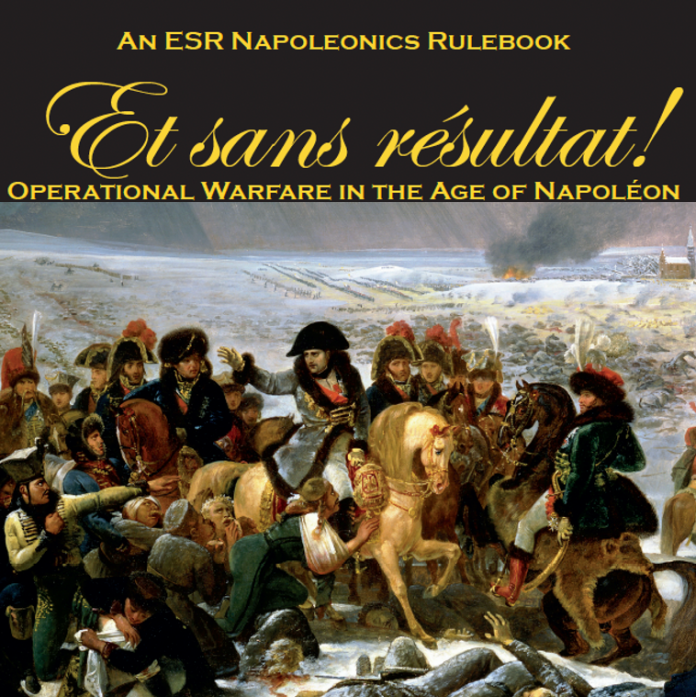So you’ve read our review of Et Sans Resultat, you’ve decided “hell yeah I want to be Napoleon” and now you’re looking around for a risky, all-or-nothing ill-advised attempt to start a land war in Asia? You’re in the right place because this week we’re looking at the first Campaign book for ESR series 3 – Master of the World: 1812 in Russia Part One.
Before diving in to the review, thanks to David at The Wargaming Company for providing materials for this review.
This review is part two of our reviews of ESR Series three, The 1812 Source Book review. You can see part one, the core rules, here.
Master of the World (MoW from now on) covers the early part of the 1812 Invasion of Russia, from Napoleon’s fateful decision to cross the Neman river to the Battle of Borodino. It’s the Grand Armee at near to the peak of it’s power, already haemorrhaging men and material at a horrendous rate as it marches towards Moscow, but still unbeaten (more or less), invincible (with caveats), and feared across Europe (to an extent). It’s not the most popular of periods for Napoleonics and, at first glance, a bit of an odd choice for a massive – and it is massive – campaign book compared to the ever popular Peninsular or 100 Days Campaigns. What you get inside makes it a little more obvious why 1812 was such a good choice for the first campaign book of ESR series 3, and why – even if you’re not playing ESR – it’s well worth picking up.
What you get
MoW Part One is a well produced, hardback sourcebook for ESR campaigns during the first half of the 1812 invasion of Russia. It contains a full system for running the invasion as a campaign, maps, force rosters and detachment details for Russian, French and Allied forces, 15 scenarios ranging from small to preposterously enormous (more on that later) and a massive selection of uniform images for both major and minor nations in the conflict.
I was surprised at first glance to see that the book is well presented and illustrated in full colour throughout – and in hardback. Not because I don’t think the Wargaming Company would put the effort in, but because this is a massive 250 page campaign source book and in many cases size leads to compromises in visual presentation – impressively not so here. Of those 250 pages, over 100 are dedicated to uniforms, with much of the rest being scenarios and the campaign, allowing you to take Napoleon’s army all the way from Poland to Moscow (but not back – Part 2 beckons!).

Before all that though, there’s a quick and serviceable introduction to the historical context of the campaign (ending, in a nice touch, with the crossing of the Neman – whatever happens next is up to you, of course), and a much needed note on army organisation in ESR series 3. One thing that was, in my opinion, lacking in the core rules was a detailed breakdown as to what exactly units were – how many line in a battalion, how units, reinforcements, attachments and divisions intersected etc – and that’s corrected in the lead-up to the scenarios, with a crucial rundown of the nuts and bolts of how your models make up units, divisions and corps. It’s a very simple addition here that makes the campaign playable, and would make a good addition to a quick start guide of how to get into ESR.
The Scenarios
The scenarios are the meat and veg of the whole book, and where you’ll be headed first to try out what ESR has to offer as a mass-battle rule set. There are 15 scenarios on offer, ranging from small skirmishes – of course, this is ESR so the skirmish still involves at least a Brigade! – all the way up to Borodino. They appear well put together at a read to provide varying levels of tactical and strategic challenge, demanding combinations of defence and attack on strong points, movement, clever reinforcement and attention to victory conditions. Every scenario has a map outlining how terrain should be set out that’s very much the ideal for wargaming – how realistic it is will vary by your group. They’re much more than stand-up-and-fight, though where that’s needed you’ll be expected to do that too. From a quick check of my references for the Russia campaign, everything seems to be historically accurate – the French often need to clean out strongpoints, the Russians to retire in good order if victory doesn’t come quickly, and the orders of battle accord to what took the field at the time, as far as I can tell.
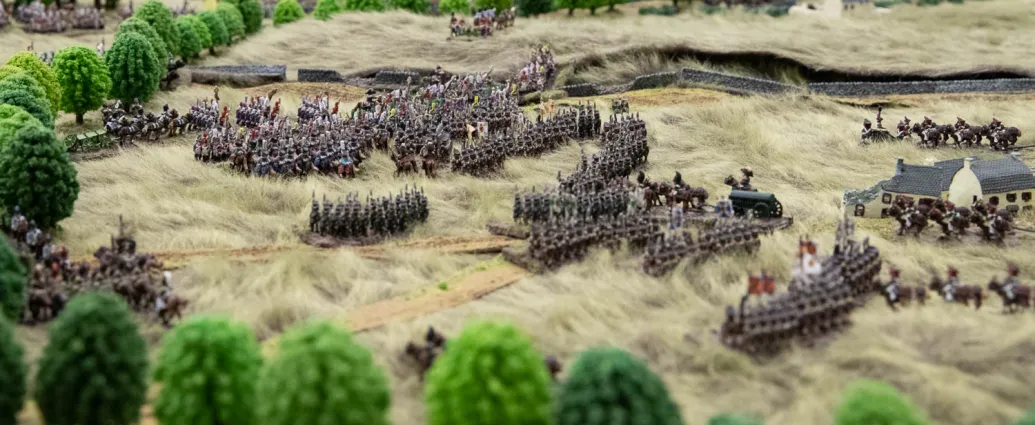
The scenarios are divided into difficulty levels, and I was pleased to see this didn’t just equate to numbers of troops on the field, but the tasks given to each side. The first scenario – the battle of Mir – isn’t “intermediate” level because it has a fairly large amount of troops (it doesn’t this is Polish Lancers versus Cossacks), but because it’s a bloody difficult fight. It’s all about movement – how does a strong but small French cavalry force fend off a swirling mass of light cavalry? That’s an interesting way to approach things, as the next battle (Ekau) has much larger forces, but the task – and the options – are much more beginner friendly. I think this speaks to the attention to detail taken by the team at the Wargaming Company. The first battle of the war is a hard one – because it was!
The maps provided for these scenarios are certainly aspirational – in practice I think they’ll be difficult to pull off without immense time and resources. That’s a theme that runs through the book and my thoughts about it – I want to be able to do this, but will I ever have the time, space and materials?

You step up in difficulty through pitched battles and the seizure of cities towards Borodino, and I think it’s worth talking specifically about “the big one”. Both sides not only have multiple forces (ESRs term for Corps or division equivalents, more or less), but multiple armies. The French have Napoleon and Murat in charge, each with massive forces under them subdivided further into divisions. The army list for the French alone is six pages long. The scope of the battle is madness – as it was in real life – and I don’t know if any game system, or any set of gamers could really pull off what the Wargaming Company proposes here. It’s fantastic, aspirational madness, it’s…. the essence of Napoleon.
It’s slightly ridiculous, and there’s an argument that it would be easier to stoke real life political tension to the point where we actually fight the battle of Borodino than to pull it off in real life, but it got me wondering if another rule set at this scale, with this level of abstraction would even present it as an option. You could do Borodino with block and chit in an afternoon, or you could make one model stand in for ten thousand and do it in Black Powder in a few hours, but to represent every Marshal and their commands, meaningfully, and make it playable? I’m not sure it’s possible – but the Wargaming Company believe it is, and all power to them. If anyone reading this ever pulls it off, please, for the love of the Emperor, let us know.
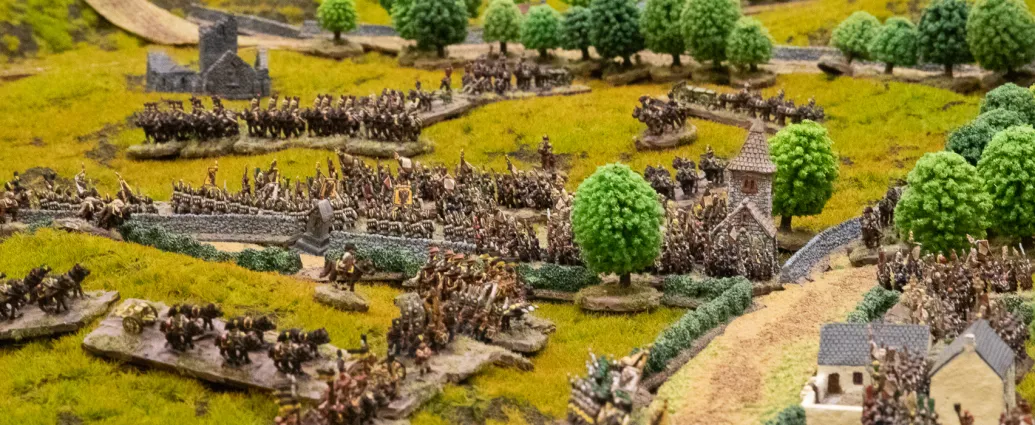
Jokes about Borodino aside, the scenarios are all presented in a fairly system-agnostic manner, so you could pick these up to use them with any Napoleonic game, though for obvious reasons the mass battle ones will work best. They give excellent layouts, force guides and objectives which can all be ported over to different systems. Some of the more interesting challenges – that Battle of Mir for example – I’m going to set myself in my solo kitchen table game of choice, Blucher, and I think they’ll work well there too.
The Plates
A welcome – and surprising – addition to the MoW book is the vast wealth of uniform images included. These cover not just the major combatants of France and Russia but go into exceptional detail on minor nations too, covering Artillery, Infantry (light and line), Guard, Cavalry of all different types and irregular units like Cossacks and Tartars. They’re introduced with guides that reference each set of uniform images that give clear instruction as to who was wearing what, and when. This includes:
- French
- Guard
- Line and Light infantry
- All cavalry – including the Mamelukes
- Artillery
- Foreign Units in French Service
- Croatian
- Portuguese
- Polish
- Spanish
- Swiss
- Austrian
- Bavarian
- Italian
- Polish
- Prussian
- Saxon
- Westphalian
- Russian
- Guard
- Line
- Artillery
- Cavalry
- Cossacks and other irregulars
Just look at that list! No longer do you have to rely on forty different Ospreys or a series of hard to find translated guides, because it’s all here. For French and Russian forces the uniform guides are broken down into regiments where uniform variation exists, and for others, illustrative examples provide enough information to get painting. This is a wealth of material here, as close to a comprehensive guide to uniforms in the Russian invasion as it’s possible to get for the price and in a single volume. Presentation is clear and intended for painters, and easily used for miniatures. I abandoned my “usual” approach of painting everything in greatcoats in order to try using the plates for units I haven’t painted before – and I think the results have been great!
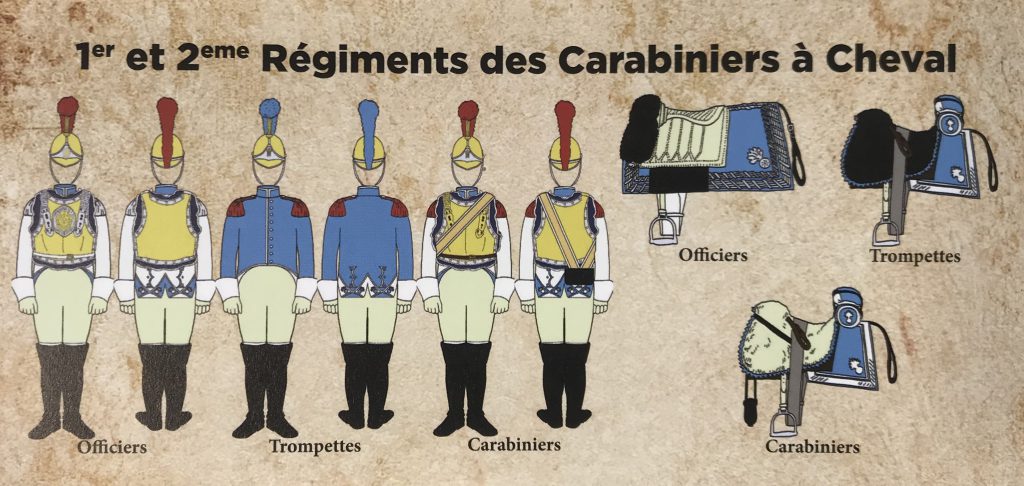
There are certainly more detailed guides to uniforms out there, but nothing that shows everything included as clearly and accessibly. It’s a beyond fantastic reference and a real labour of love. As a Napoleonics guy I was almost literally hooting and hollering at having all this in one place, something I can very quickly flick through and put into use quickly. I’ll keep hold of the Illustrated Encyclopaedia for close reference of Major Nations for 28mm where the level of detail is that little bit higher, but MoW is going to be an invaluable guide.
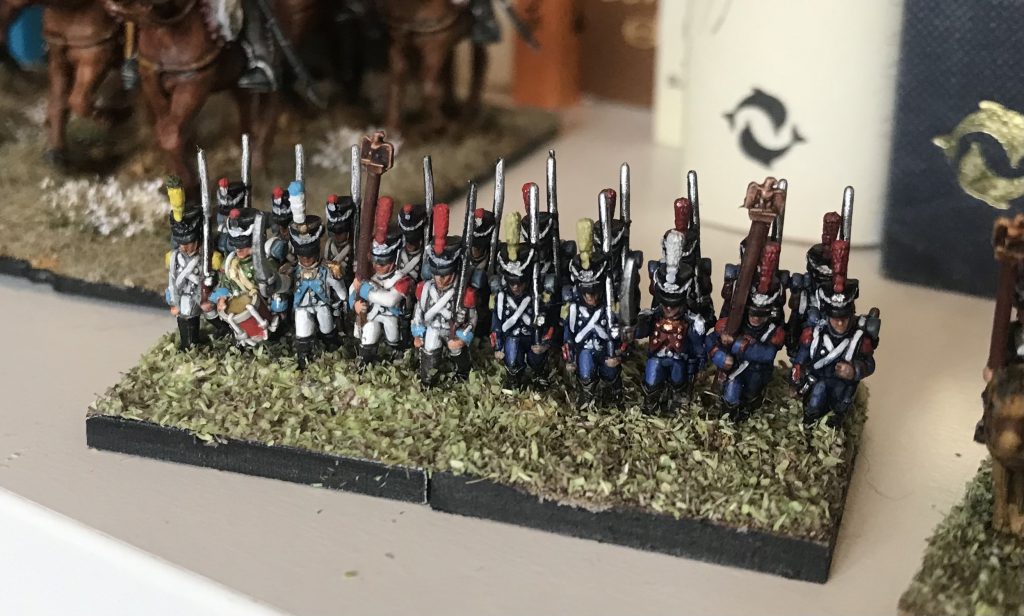
Zuul: This section of the book is a phenomenal resource for painters. I’ve always dabbled in Napoleonics, especially spending way too much time viewing the uniforms on display at places like Les Invalides in Paris, but having a quick reference guide while your painting is especially great. While I was painting the Russian line infantry, I found myself using this reference guide as just that – a reference. The simplicity of the plates while being detailed I think actually helps a painter in completing forces – you’re not overly concerned with the ultra-correct shade of green to use because the plate simply has a dark green color. How much time you spend highlighting or even which color to use is up to you.
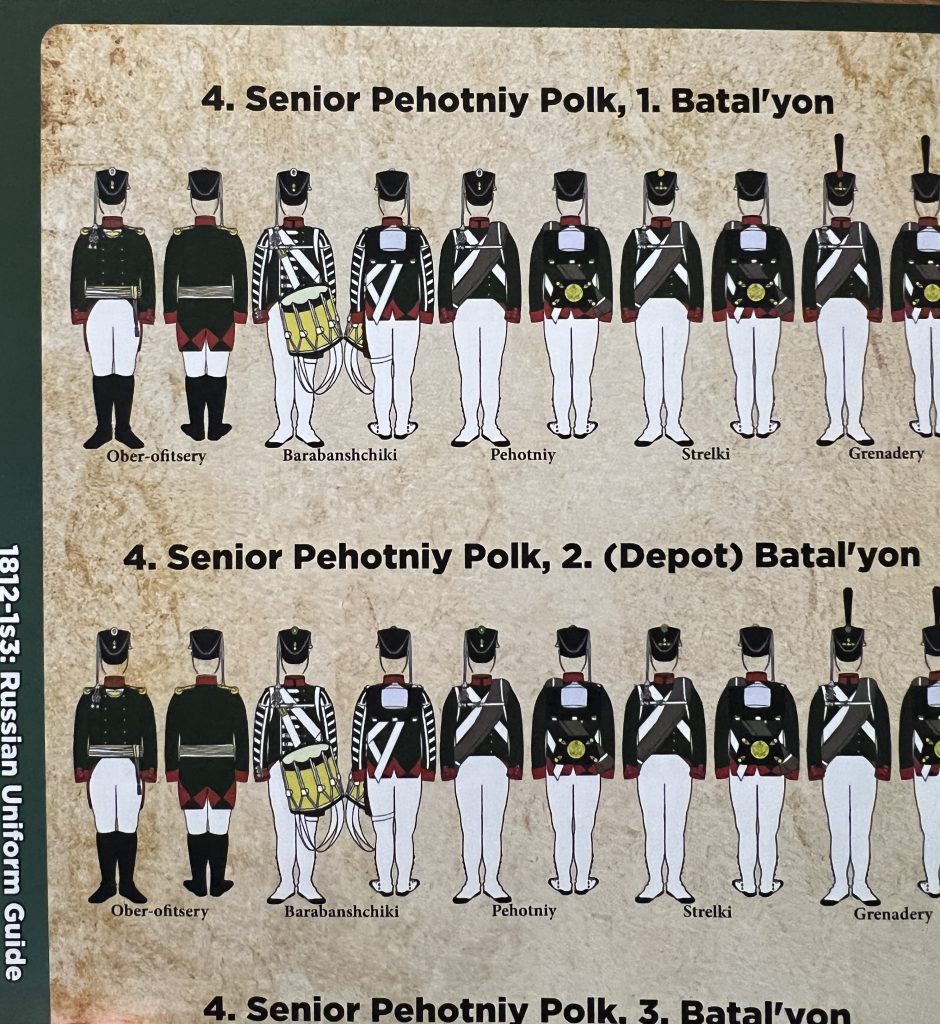
I ended up painting my first infantry as some of the Senior Pehotniy Polk, 1. Batal’yon. While it’s hard to get exact details and buttons done at this scale (at least for me), being able to accurately represent them on the table is an invaluable resource as a spot where the MoW campaign book really shines.

Conclusion
So, after all that, do you pick up Master of the World Part 1?
I think picking up this book is going to depend on who you play with and how you play – or how you aspire to. I think as a source of uniform plates for French, Russian, Prussian and allied nations, it’s going to be a good bet, simply because they’re clear, well presented uniform plates in a handy reference format. That’s a damn good reason alone to pick it up, especially in the world of Napoleonics where uniform questions often end up being based on some guy on facebook’s vague memory of a 30 year old Osprey only printed in black and white. The plates are fantastic, detailed, clear and in massive volume – it’s not quite every single line regiment of the French army, but, well, it’s more than enough of them.

Aside from the plates, which are widely useful to everyone, I think it splits into two audiences who I think will get different levels of use out of the book. For me, many of the scenarios and ideas presented – particularly the larger battles – are simply out of my reach, even if I roped in everyone I vaguely know who plays Napoleonics. I don’t have the time, resources, space or number of models to play Borodino and, as much as I would like that not to be the case, that isn’t going to change any time soon. So the smaller scenarios and the ideas presented in MoW are good opportunities for me to get playing ESR – or to use in other games – and that’s great, but there’s a lot here that I can only aspire to. Your mileage may vary on having wargames to aspire to – I like it, but I can’t deny it’s a bittersweet feeling.
On the other hand, if you’re someone with a group of friends, time, and a great space to play games, perhaps with a handy bar attached, I can’t see a reason why you wouldn’t want to give this a go. You’re living the dream with all that gaming space and time already, why not live Napoleon’s dream and invade Russia?
Questions, Comments, Suggestions? Going to refight the battle of Borodino, for reals? contact@goonhammer.com or leave a comment below
